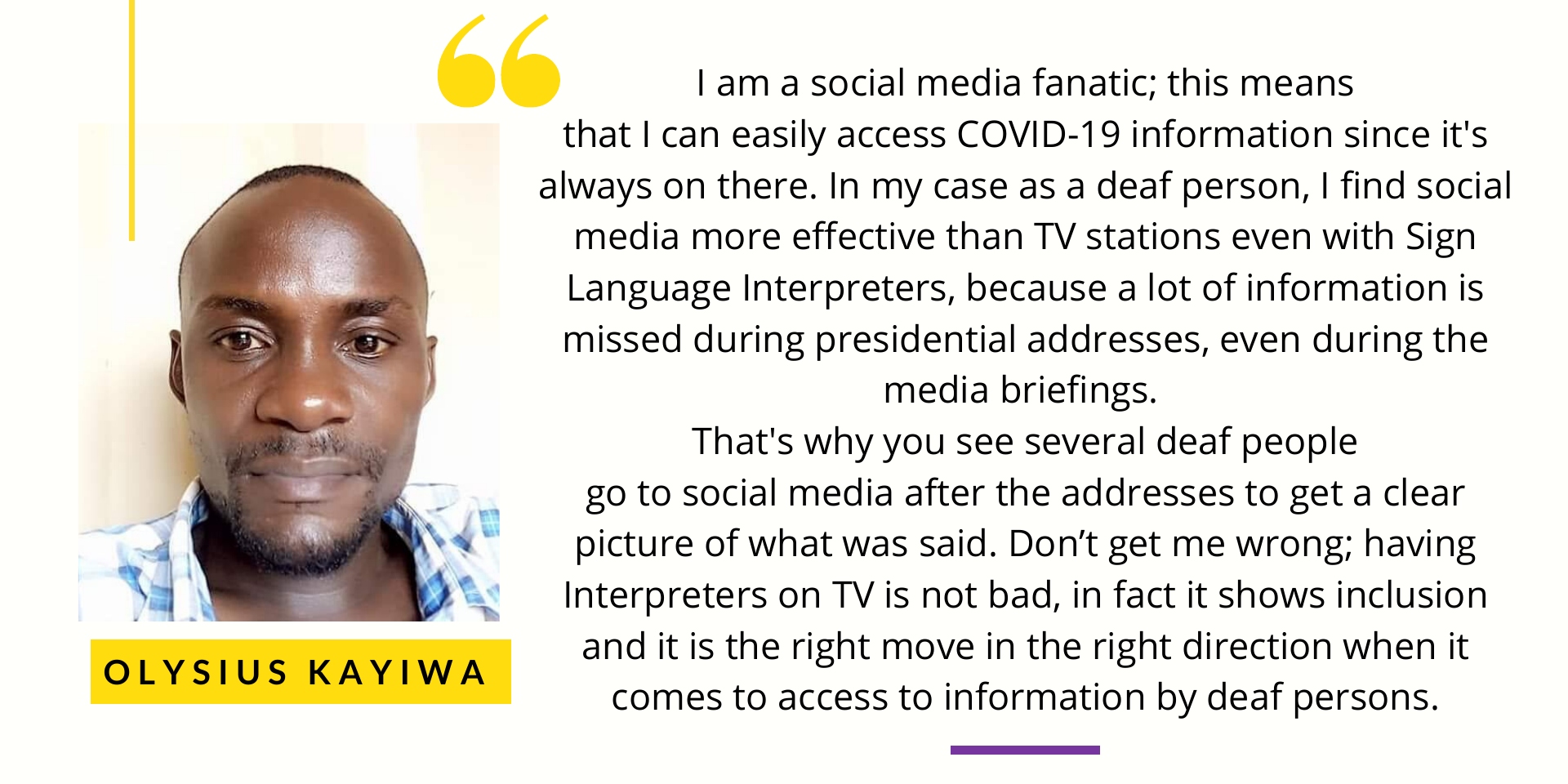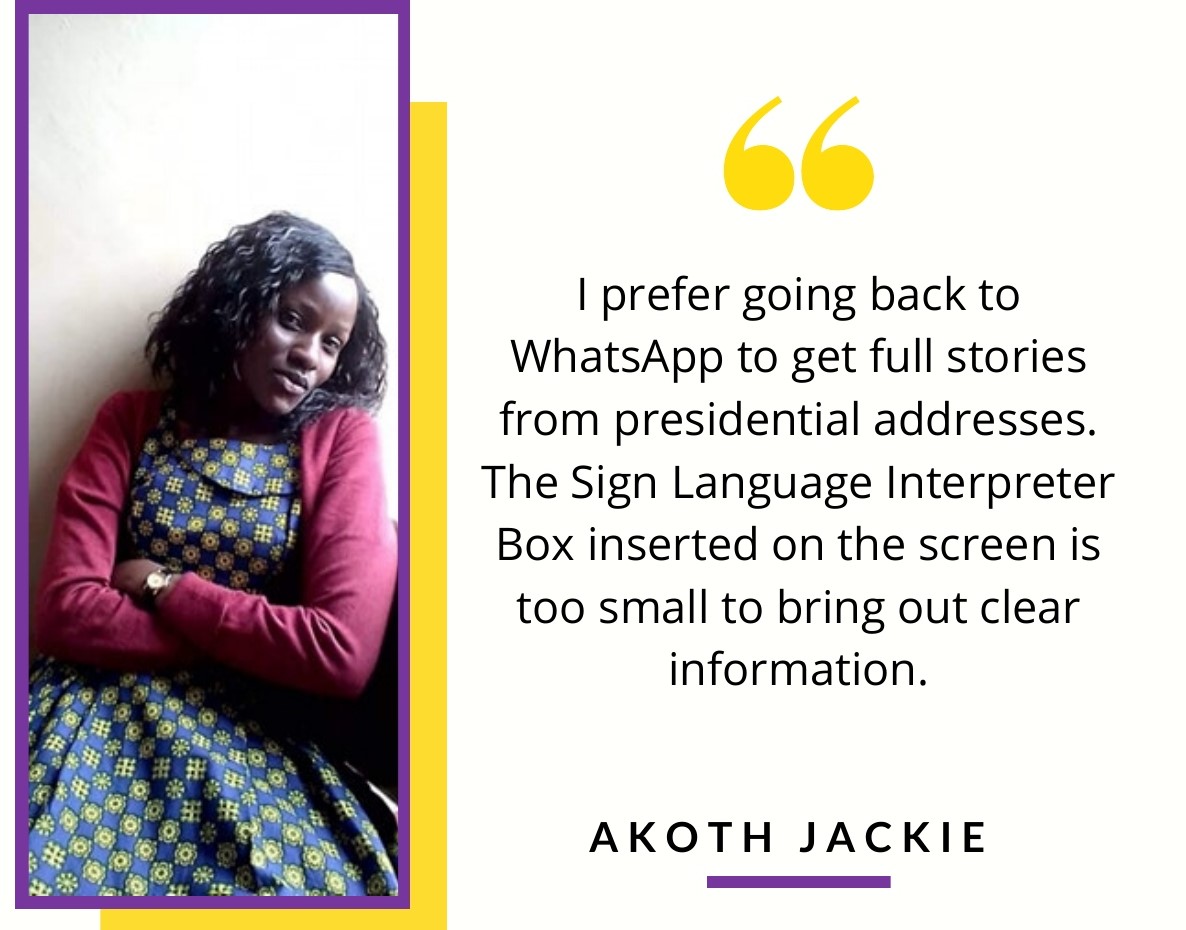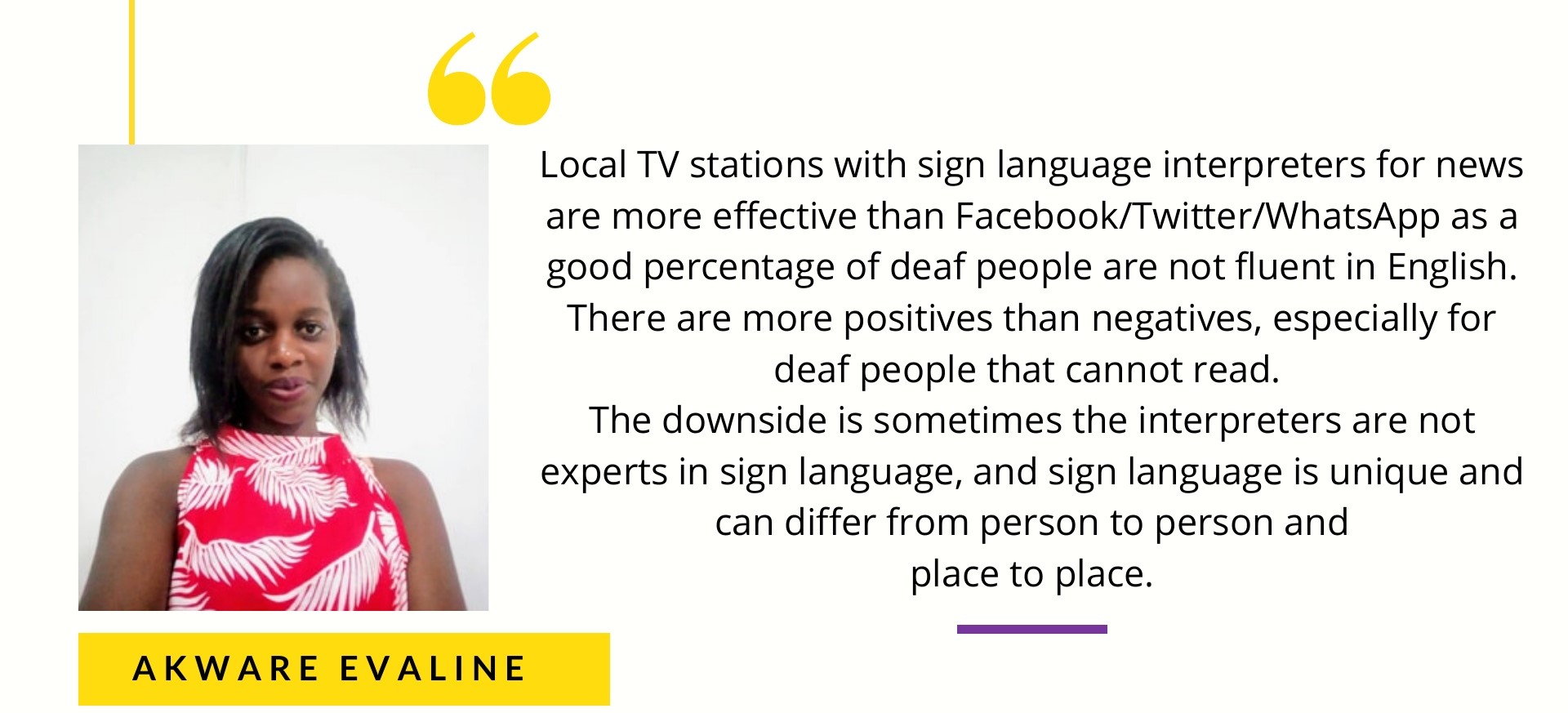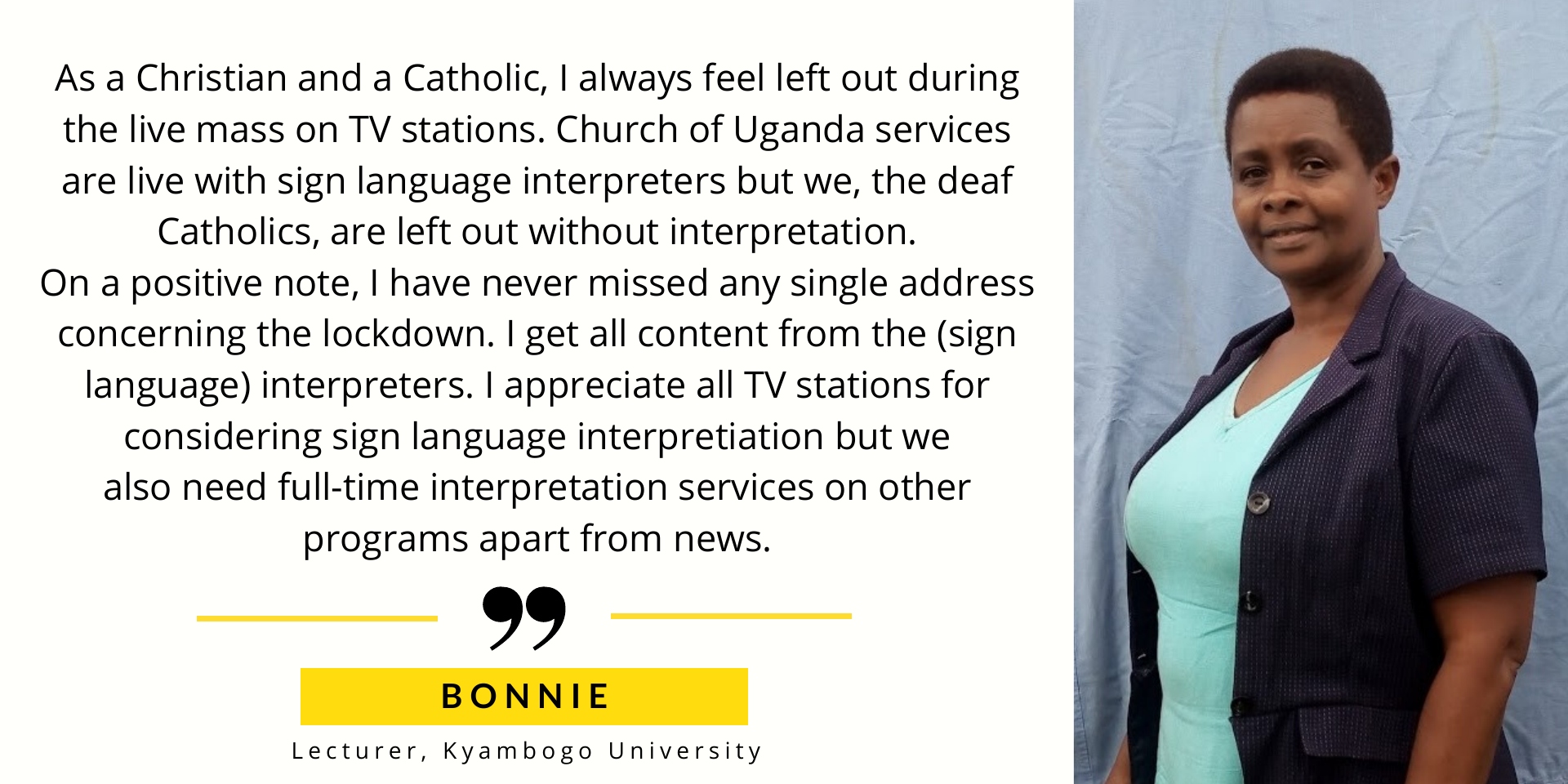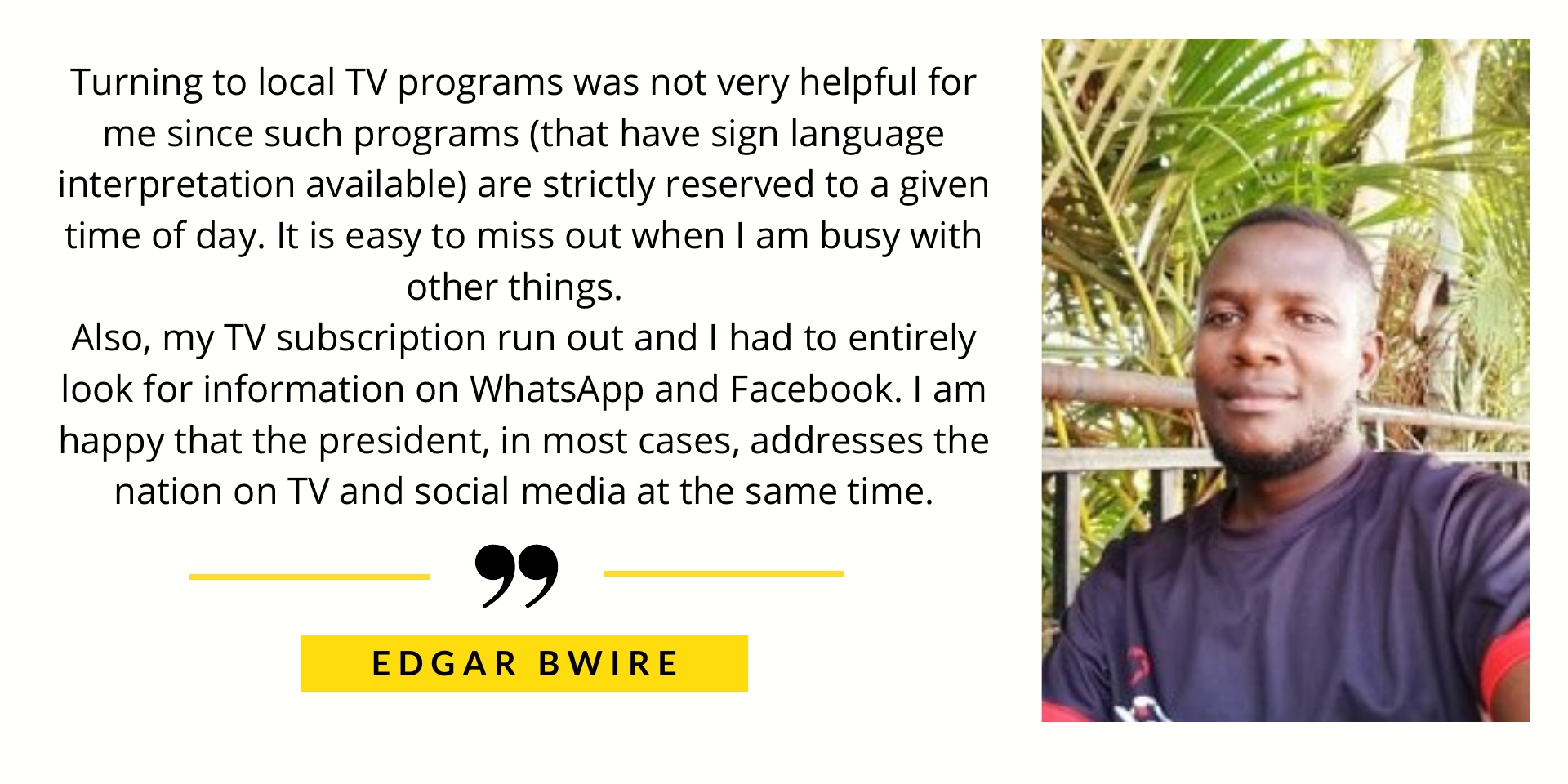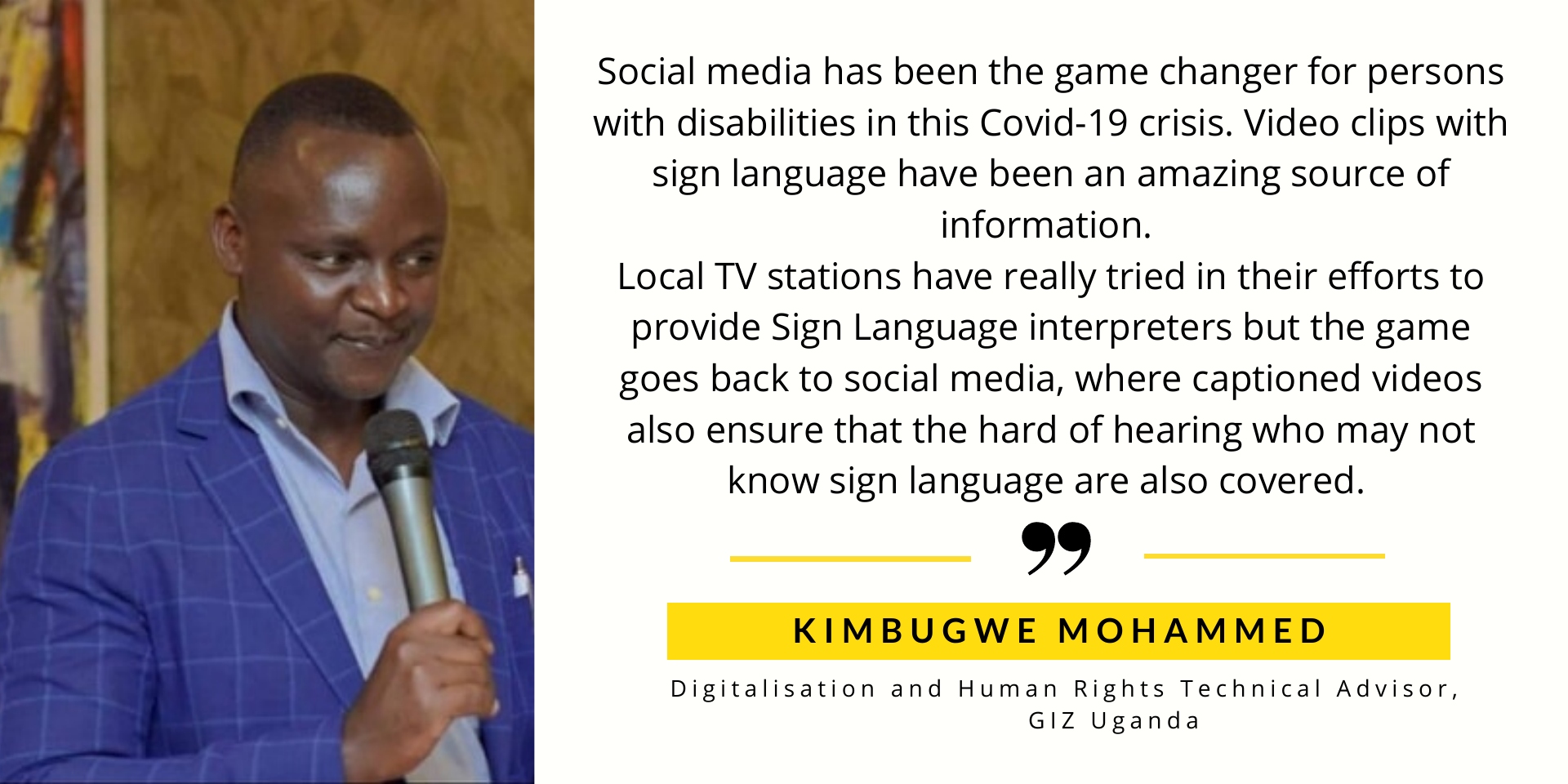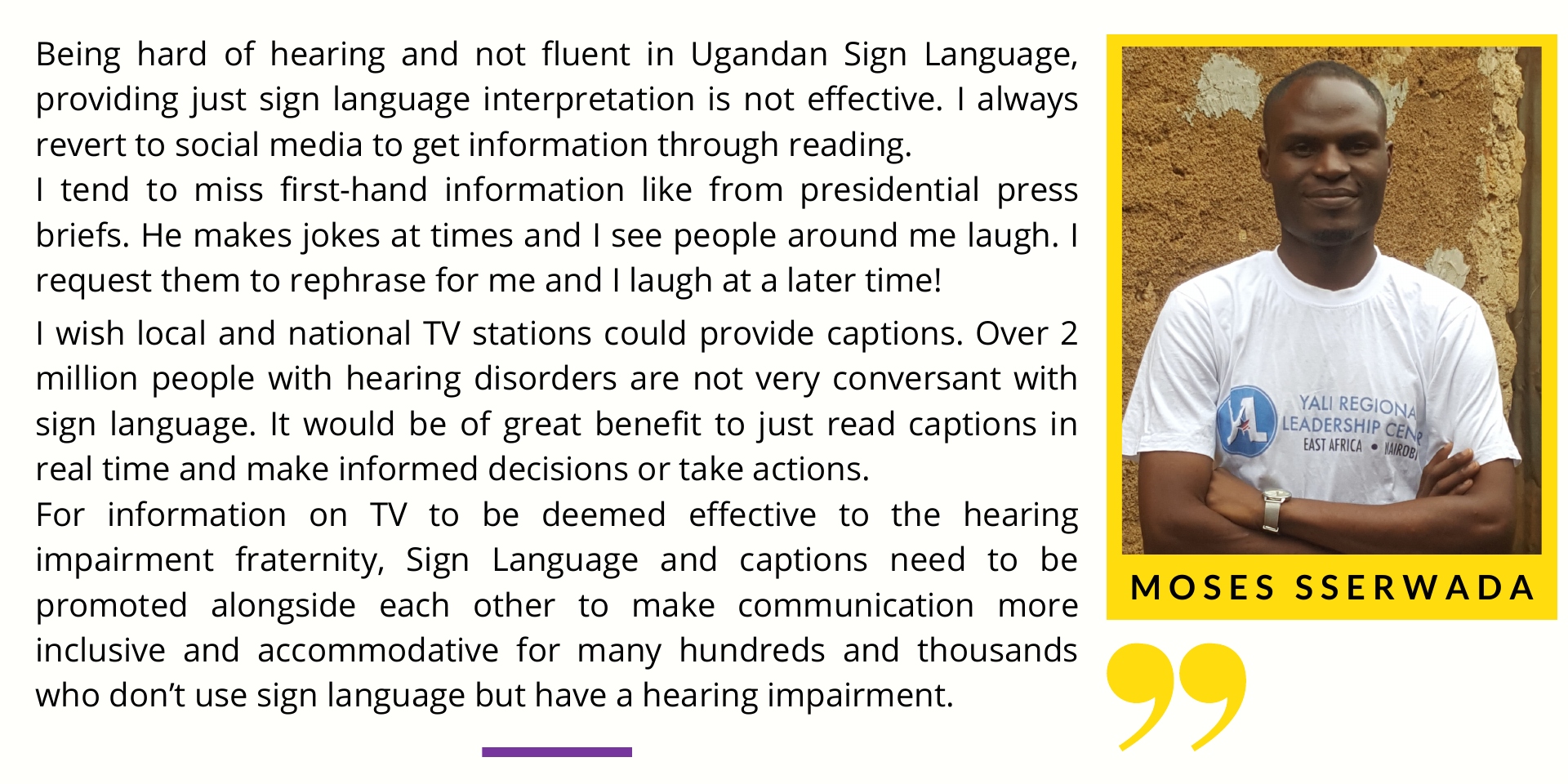#SeparatelyTogetherUG Series: Sign Language Interpretations on TV Stations; What’s good, what’s lacking
The #SeparatelyTogetherUG Series features various persons with disabilities sharing their experiences throughout the COVID-19 crisis. We intend to use these stories not only as a means of staying in touch with the disability fraternity but to aid advocacy efforts to see to it that the needs of persons with disabilities are not forgotten in any interventions in the COVID-19 crisis and beyond.
Television stations all over Uganda over the past years have taken steps to provide sign language interpretation particularly for news coverage. In these times, where getting information from reliable sources such as TV is crucial, is the sign language interpretation provided sufficient?
What is apparent from these stories is the need for collaboration between the Uganda Communications Commission and National DPOs to come up with Standard Operating Procedures for Sign Language Interpretations and Captions. Social Media can no longer be considered an alternative means of communication but a major communication tool and should be treated as such by media channels. Reliance on radio for communications to rural masses leaves out a huge majority of persons with hearing impairments in rural areas with no regular access to social media or TV.
